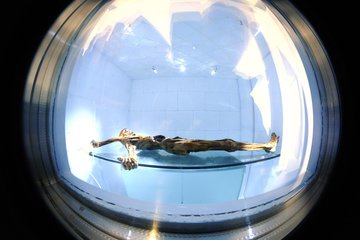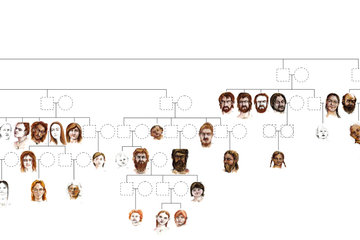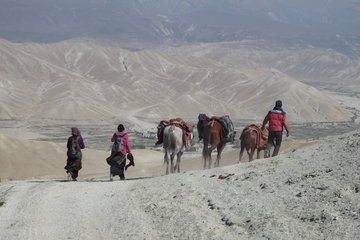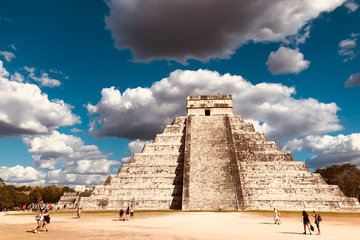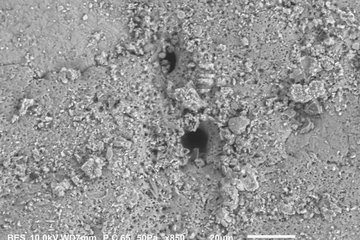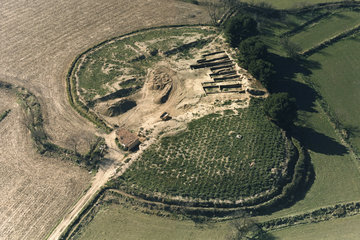East Asia meets Europe in Lower Austria
Ancient genomes show integration of genetically different groups to the same early medieval Avar society in the Vienna Basin, Austria
Researchers from the Max Planck Institute for Evolutionary Anthropology, together with an international team, carried out an archeogenetic study of human remains from more than 700 individuals from the Early Middle Ages. Two large burial sites, Mödling and Leobersdorf, have been genetically analyzed in their entirety. The surprising result was that the individuals from Leobersdorf were mostly of East Asian origin, while those buried in Mödling mostly had European ancestry. Both communities lived next to each other for at least six generations.

Research combining expertise of various disciplines found that genes and culture do not have to match. The latest findings from the European Research Council project HistoGenes emerged from a genetic study of burial grounds from the Avar period in the 8th century CE. The Avars had arrived in the 6th century from the East Asian Steppes and settled in East Central Europe among a mixed population.
Despite their rich archaeological heritage, many questions remained. Were the people buried in these sites descendants of the Avar conquerors or of the previous population that was integrated into the Avar society? Or had these two groups long since mixed, as many expected? The analysis of two large sites south of Vienna, of 500 graves in Mödling and almost 150 in Leobersdorf, brought unexpected results.
When the researchers looked at the ancient DNA extracted from the human remains from these neighbouring sites, they were very surprised. While the population of Leobersdorf was mostly of East Asian origin, those buried in Mödling had ancestry associated with European populations. “The genetic difference between these groups was very clear and consistent for most individuals at the sites,” says Ke Wang, a geneticist and one of the lead authors of the study.
Before genetic analysis, no large difference between the sites had been observed. The archaeological remains of the two communities and their way of life were very similar. "The cultural integration apparently worked despite major genetic differences, and these people were obviously regarded as Avars," says Walter Pohl from the Austrian Academy of Sciences, a historian and one of the senior authors of the study.
Peaceful coexistence

The historical records agree with the evidence from anthropology and archaeology that this was one of the most peaceful times in the history of the Vienna Basin, in spite of the reputation of the Avars as warriors. "We find no battle injuries on the skeletons and there are hardly any signs of deficiencies," explains Doris Pany-Kucera, anthropologist at the Natural History Museum Vienna and one of the lead authors of the study. Also, weapons were only occasionally placed in the graves.
Thanks to the sampling strategy and highly sensitive genetic analysis, it was possible to discover a high number of relatives among the deceased. “The large number of genetic relationships between the individuals allowed us to reconstruct contemporary six-generation-long pedigrees at each site,” says Zuzana Hofmanová from the Max Planck Institute for Evolutionary Anthropology in Leipzig, Germany and Masaryk University in Brno, Czechia, a geneticist and one of the senior lead authors of the study.
Only exceptionally, the individuals had no biological connection to anybody else at their burial ground. Yet, the researchers found no consanguineous relationships even between distant relatives. Interestingly, they were able to determine that almost none of the mothers had local ancestors: they must therefore have come from other regions and other communities. However, there were hardly any genetic connections between Mödling and Leobersdorf.
Both communities followed a similar social practice in choosing partners from certain other communities, through which their different ancestry was preserved: the women that became mothers in Leobersdorf apparently came from communities that also descended from East Asia (possibly from the centre of the Avar realm), while in Mödling they were of European descent. Yet they did not differ in status or wealth. "Status symbols such as belt fittings depicting griffins, and their culture and customs were the same. Most likely both considered themselves Avars," says Bendeguz Tobias, an archeologist and one of the lead authors of the study.
Such large studies that systematically investigate burial grounds are still rare in the field. “Mödling burial ground is one of the largest ever analyzed genetically, and such results hold a lot of potential for future research in various disciplines,” says Johannes Krause, director at the Max Planck Institute for Evolutionary Anthropology and one of the senior authors of the study.



